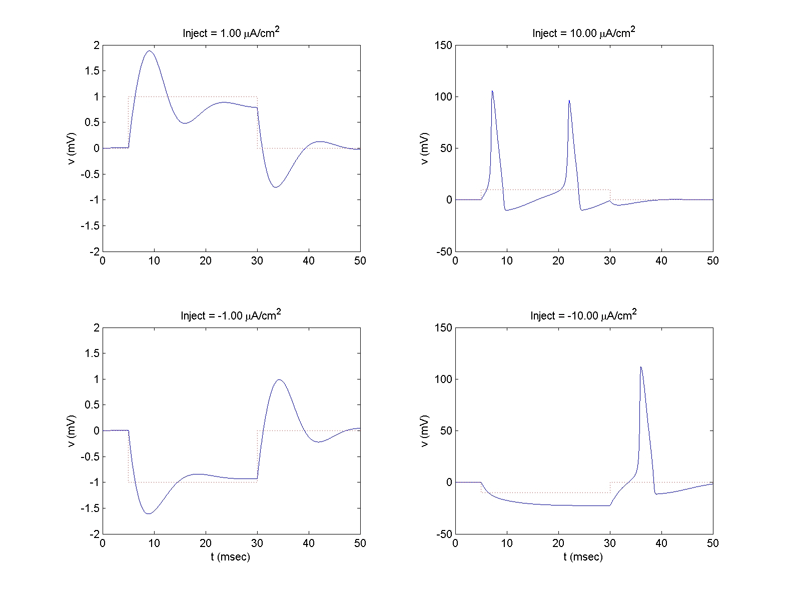
Here's the output of main script (hw3p2.m). Note the difference in vertical scale between the left-side and right-side plots.

This is what Hodgkin and Huxley referred to as anode break excitation (see pp. 535-537 in Hodgkin and Huxley (1952)). This is also sometimes referred to as rebound excitation. The hyperpolarizing pulse decreases the postassium conductance (moves the steady-state value of n closer to 0) and removes sodium inactivation (moves the steady-state value of h closer to 1). Take a look at the steady-state plots of the HH state variables that you generated in HW3.1 to verify this.
Both the prolonged inactivation of K+ channels (n->0), and the prolonged inactivation of inhibitory gates of Na+ channels (h->1) play a role in anode break excitation. The reduced K+ conductance leads to less hyperpolaring current and the reduced Na+ deactivation leads to more depolarizing current. Furthermore, the kinetics of both n and h are slower than that of the sodium channel gate m. This can be observed from the fact that the Tau values for m are more than an order of magnitude less than the Tau values of n & h for most voltages. Thus, the conducting m component of Na+ channels can respond faster before n & h respond to the change in voltage. This allows a transient depolarization after a prolonged hyperpolarizing voltage which if large enough can generate a spike.